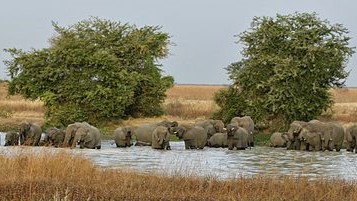On the western edge of Central Africa, a nation of volcanic peaks and untamed savannahs is quietly reshaping its place on the global travel map. Cameroon, long known to geographers for its topographical variety, is now drawing a different sort of attention—from international travelers seeking both adventure and authenticity. At the heart of this shift stand two emblematic landscapes: the volcanic massif of Mount Cameroon and the wildlife-rich plains of Waza National Park. Together, they are becoming cornerstones of a growing eco-tourism movement that blends exploration with preservation.
The black cone of Mount Cameroon rises abruptly from the Gulf of Guinea, its summit—at 4,095 meters—the highest in West Africa. The ascent is more than a test of endurance. Trails wind through lowland rainforest damp with mist, give way to open savannahs where the air thins and cools, and finally cross stretches of hardened lava from eruptions within living memory. On clear days, the view from above the tree line sweeps over the Atlantic, offering a reminder of the mountain’s dual identity as both a geological giant and a biological haven.
Scattered along the slopes are small, solar-powered eco-lodges—Fako Mountain Lodge at 2,800 meters and Mann’s Spring Lodge a few hundred meters below—that have become models of low-impact tourism. Their wooden verandas overlook valleys where elephants occasionally graze, and where the calls of chimpanzees echo through the canopy at dawn. Treks are organized under the authority of Mount Cameroon National Park, with trained local guides ensuring that revenue flows back into nearby communities and conservation programs.
Far to the north, where the forest gives way to open grassland, Waza National Park stretches across 1,700 square kilometers of Sahelian savannah. Here, giraffes move in slow procession through stands of acacia, while lions sprawl in the heat and herds of elephants shadow the riverbeds. The park counts more than 350 recorded bird species, making it a point of pilgrimage for ornithologists and photographers alike.
Waza’s recent history has not been without hardship. Security concerns in the past decade sharply reduced visitation, threatening both the park’s economy and its conservation efforts. Yet partnerships between the Cameroonian government and international donors—including a notable collaboration with the Netherlands—have brought renewed investment. The emphasis has been on restoring habitats, strengthening ranger patrols, and reconnecting tourism with local livelihoods. Guided safaris, birding expeditions, and cultural programs with nearby villages now form part of a broader strategy to ensure the park’s resilience.
In both the highlands and the savannah, Cameroon’s eco-tourism initiatives are rooted in a common principle: that safeguarding natural heritage can go hand in hand with economic opportunity. As travelers increasingly seek destinations that combine environmental responsibility with cultural depth, Mount Cameroon and Waza National Park offer a vision of tourism’s possible future—one where adventure, conservation, and community intersect.
Sources:
- Mount Cameroon National Park official website.
- Waza National Park official website.
- Naturenews.africa, “Biodiversity of Mount Cameroon.”
- Business in Cameroon, “Netherlands supports rehabilitation of Waza National Park.”
- Xplrverse, “Guide to Waza National Park.”

